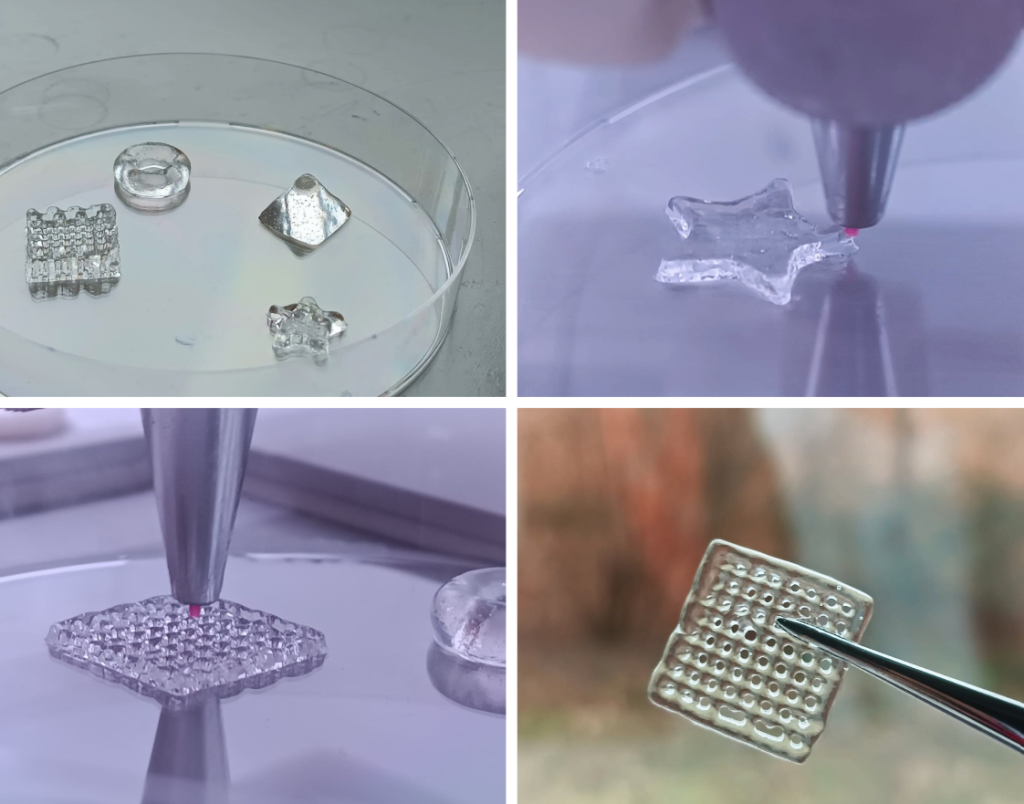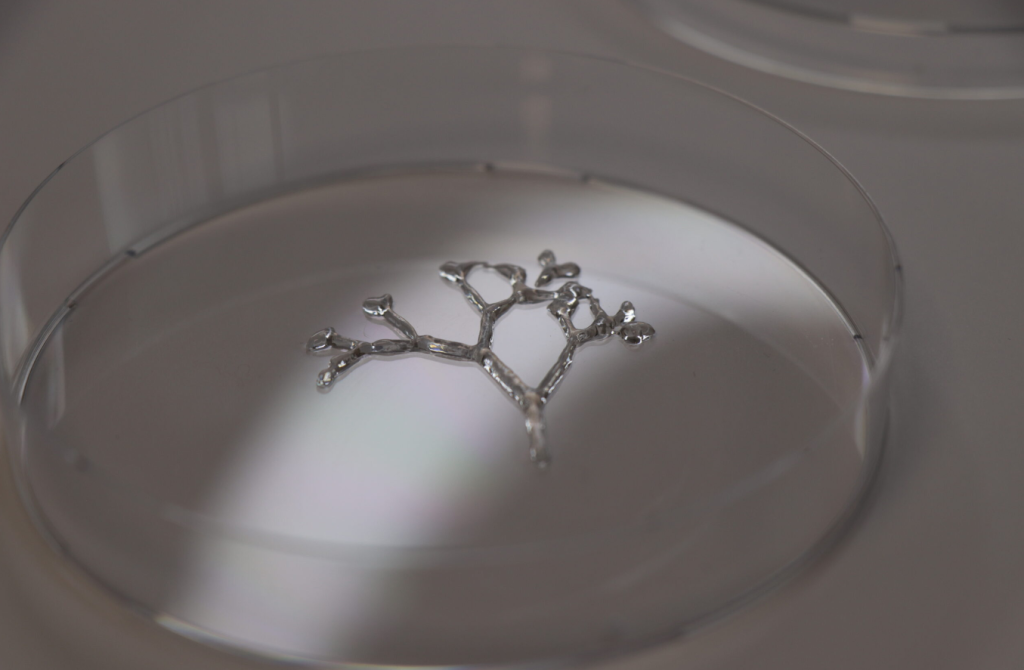A new project called Human Bio-inks for 3D printing (HU3DINKS) is aiming to develop human tissue-based bio-inks for 3D bioprinting. Funded by the IraSME initiative, this project aims to promote cross-border collaborations.
The HU3DINKS consortium includes partners from Belgium and Austria. THT Biomaterials (Vienna, Austria) contributes expertise in human placenta-derived materials, while BIO INX (Ghent, Belgium) specializes in bio-ink development for various printing technologies. MorphoMed (Vienna, Austria) offers support with medical grade silk technology, and UpNano (Vienna, Austria) is renowned for expertise in 2PP (bio) high-resolution bio 3D printing technologies. Furthermore, the biological validation of the newly developed bio-inks is carried out by the Ludwig Boltzmann Institute for Traumatology, in conjunction with AUVA.
“The technology has made some tremendous advances in performance but is now mainly limited by the absence of high-performing biological materials. The HU3DINKS project can induce a paradigm shift in the field by truly mimicking the human cellular environment both in terms of architecture and composition,” said, Markus Lunzer, Materials Specialist at UpNano.

Toward more human-like 3D bioprinting
Currently, 3D bioprinting predominantly relies on materials derived from animal sources, like gelatin or collagen. The need for animal-free alternatives arises to replace animal testing and better resemble human tissue conditions. Synthetic polymers have been explored but lack the complexity of in vivo situations, failing to bridge the gap between in vitro tests and animal models, says the consortium.
The HU3DINKS project aims to develop high-performing human tissue-based bio-inks for 3D bioprinting, including extrusion and high-resolution laser-based methods. Despite commercial human tissue-derived materials being available, their bioactivity and 3D printing performance remain poor. Thus, the HU3DINKS consortium seeks to convert these materials into bio-inks for more efficient 3D printing.
Consequently, 3D printed human tissue models offer a more accurate representation of native 3D tissues compared to traditional 2D cell culture techniques. This allows for testing drugs or cosmetics on these models, aligning with the 3R principle of reducing, replacing, and refining animal usage in scientific research.
The goal is accomplished through high-resolution bioprinting, particularly with the use of 2-photon polymerization (2PP). This technology allows for subcellular resolution, effectively mimicking complex microcellular architecture. Moreover, 2PP is one of the few methods that facilitate direct printing within microfluidic chips, streamlining the drug screening process.

Bioprinting: A new way to repair and replace damaged tissue
Last year, 3D bioprinting specialist CollPlant introduced a bio-ink known as ‘Collink.3D 90’ to its material portfolio in the past. This second recombinant human collagen (rhCollagen)-based material was distinguished by its improved mechanical properties, specifically tailored to meet the 3D printing demands of hard and soft tissues. Additionally, the ink was reported to accelerate cell migration, surpassing existing cell-culturing hydrogels in this aspect. This characteristic made it a “promising choice” for the development of regenerative medicines, says CollPlant.
Finnish bioprinting company Brinter, allied with Tampere University‘s Kellomäki Lab Biomaterials and Tissue Engineering Group to explore bio-inks for 3D printing and drive “advancements in the bioprinting field.” Their first breakthrough involved the development of a novel method to create a photocrosslinkable bio-ink from gellan gum, a precursor known for its favorable rheological properties in hydrogels. Employing a two-step crosslinking technique, the team successfully transformed previously unprintable gellan gum inks into viable bio-inks, enabling the fabrication of 3D printed structures. Additionally, the team proposed the possibility of applying this technique to various other bioink formulations.
What does the future of 3D printing for the next ten years hold?
What engineering challenges will need to be tackled in the additive manufacturing sector in the coming decade?
To stay up to date with the latest 3D printing news, don’t forget to subscribe to the 3D Printing Industry newsletter or follow us on Twitter, or like our page on Facebook.
While you’re here, why not subscribe to our Youtube channel? Featuring discussion, debriefs, video shorts, and webinar replays.
Are you looking for a job in the additive manufacturing industry? Visit 3D Printing Jobs for a selection of roles in the industry.
Featured image shows HU3DINKS logo. Image via Flam3D.



